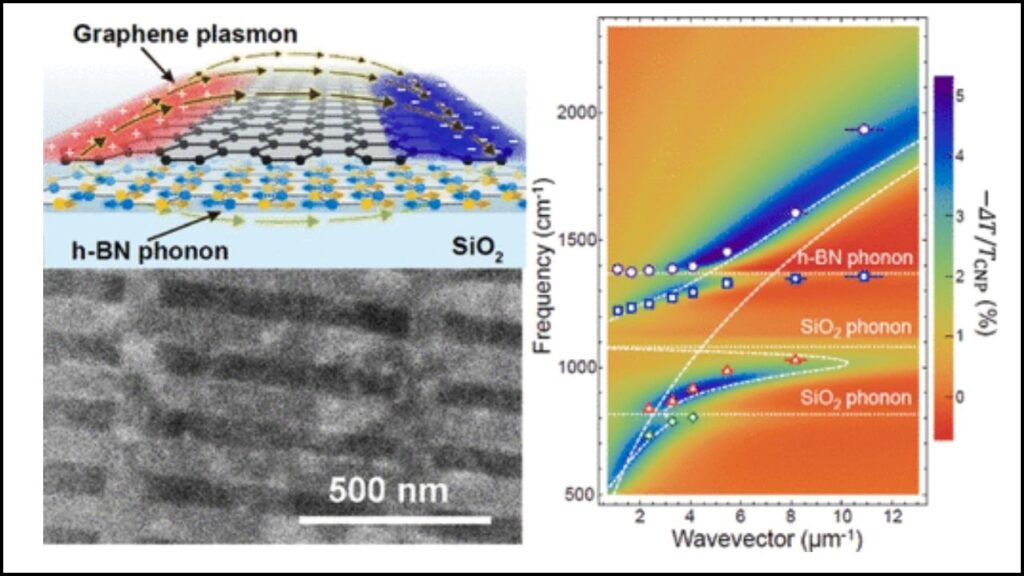The graphene–silver–silicon carbide platform is revolutionizing the field of molecular sensing by achieving unprecedented sensitivity through phononic quantum interference. This cutting-edge technology combines three remarkable materials—graphene, silver, and silicon carbide—into a highly tunable sensor capable of detecting tiny changes at the molecular level with remarkable precision. Its breakthrough promises transformative applications in healthcare, environmental monitoring, and biochemical analysis.

Table of Contents
Introduction: Understanding Molecular Sensing and Its Importance
Molecular sensing involves detecting specific molecules—such as chemical compounds, pollutants, or biological markers—often present in very low concentrations. Having sensitive and reliable molecular sensors is essential in areas like medical diagnostics, food safety, and environmental protection. Detecting molecules quickly and accurately can enable early diagnosis of diseases, detect contamination before it spreads, and improve scientific research.
This new platform exploits the unique properties of graphene—a single-atom-thick layer of carbon with exceptional electrical and optical behavior—combined with silver, known for its excellent ability to interact with light (plasmonics), and silicon carbide (SiC), a stable, wide-bandgap semiconductor that supports special vibrational modes called phonon polaritons. Together, these materials work synergistically to amplify sensing signals through phononic quantum interference, setting a new record for molecular sensor sensitivity.

Graphene–Silver–Silicon Carbide Platform
| Feature | Detail |
|---|---|
| Materials Used | Graphene, Silver, Silicon Carbide (3C-SiC polytype) |
| Innovative Principle | Tunable phononic quantum interference to boost molecular sensing |
| Sensitivity Gain | Up to a 39.1% improvement in refractive index sensitivity with multilayer graphene |
| Detection Range | Mid-infrared spectrum critical for identifying molecular vibrations |
| Gas Response Times (Oxygen, Hydrogen) | 3.5 s / 0.15 s and 12 s / 0.15 s respectively |
| Applications | Healthcare diagnostics, environmental sensing, chemical detection |
| Official Research Source | Graphene-Info Molecular Sensing Records |
The combination of graphene, silver, and silicon carbide in this platform marks a significant leap forward for molecular sensing technology. By leveraging phononic quantum interference, it achieves outstanding sensitivity, speed, and tunability. This technology is well positioned to impact healthcare diagnostics, environmental safety, and industrial chemical monitoring. Its compatibility with existing semiconductor fabrication methods further enhances its potential for widespread adoption and practical applications.
How Does the Graphene–Silver–Silicon Carbide Platform Work?
Understanding Graphene Plasmons and Phonon Polaritons
- Graphene plasmons are waves created by oscillations of electrons in the graphene sheet that can confine light at scales much smaller than its wavelength. This tight confinement enhances light–matter interaction.
- Phonon polaritons are hybrid particles formed by electromagnetic waves coupled with vibrations (phonons) inside a crystal like silicon carbide.

By combining these effects, the platform uses silicon carbide’s phonon polaritons interacting with graphene’s plasmons, while silver supports surface plasmon resonances that amplify light absorption and confinement.
The Power of Phononic Quantum Interference
This phenomenon arises when vibrational modes in the material interfere at the quantum level, substantially enhancing the detection of molecular vibrations. It particularly boosts sensitivity in the mid-infrared range, where molecules have unique vibrational “fingerprints.” This sensitive detection allows the sensor to respond to even very low concentrations of molecules.
Practical Benefits for Sensing
- Enhanced absorption and confinement of infrared light enable detection of molecules that were previously hard to sense.
- High sensitivity means small chemical or biological changes can be identified quickly.
- Compatible with existing fabrication methods used in semiconductors, making scale-up and integration feasible.
Step-by-Step Guide to the Technology

Step 1: Material Preparation
- Graphene layers are grown on silicon carbide substrates using chemical vapor deposition (CVD). Adding multiple graphene layers increases sensitivity.
- Silver layers or nanoparticles are deposited between graphene and silicon carbide to boost plasmonic effects.
- Silicon carbide acts as a stable base that sustains phonon polaritons crucial for sensor function.
Step 2: Device Fabrication
- Materials are assembled layer-by-layer under controlled conditions to create uniform interfaces.
- Standard semiconductor microfabrication techniques such as photolithography are used, making this process compatible with mass production.
- The sensor is often formed as waveguides or sensor arrays for flexible applications.
Step 3: Sensor Operation
- Molecules binding to the sensor surface change its refractive index, shifting the plasmon resonance peak.
- Increasing the number of graphene layers improves wavelength shifts in response to molecules, with sensitivity reaching values of approximately 2810 nm/RIU (refractive index unit).
- The sensor enables fast and precise detection of gases like oxygen and hydrogen as well as biological molecules such as viruses and blood cells.
Step 4: Data Analysis
- Spectroscopic tools analyze changes in resonance signals.
- Shifts correspond to molecular interactions on the sensor surface.
- Phononic quantum interference amplifies signal clarity for superior accuracy.
Clear Examples and Practical Uses
- Healthcare Applications: Detect viruses like hepatitis B, monitor glucose levels, and analyze blood cells for early disease diagnosis.
- Environmental Monitoring: Identify water pollutants with very small refractive index changes, aiding in pollution control.
- Industrial Applications: Real-time monitoring of gases such as oxygen and hydrogen with rapid response and recovery times.
Glossary of Important Terms
| Term | Explanation |
|---|---|
| Graphene | A sheet of carbon atoms one atom thick, known for exceptional electrical and mechanical properties. |
| Phonon Polaritons | Hybrid particles combining light and vibrational energy in a crystal lattice. |
| Surface Plasmon Resonance (SPR) | Oscillations of electrons at the interface between a metal and a dielectric stimulated by light. |
| Refractive Index Unit (RIU) | A unit that measures how much light slows down when passing through a material. |
| Chemical Vapor Deposition (CVD) | A process to grow solid thin films on surfaces from gaseous precursors. |
Graphene Breakthrough Could Supercharge Terahertz Tech — Here’s What It Means for the Future
Scientists Uncover Hidden Magnetic Structures Under Graphene With Supercharged Scanning Tech
This Metal-Free Graphene Supercapacitor Generates 200 Volts — And It’s Paper Thin
FAQs About Graphene–Silver–Silicon Carbide Platform
Q1: How does graphene enhance sensing?
Graphene provides tunable plasmon resonances that strongly interact with molecular vibrations, increasing sensor sensitivity and speed due to its superior electrical properties.
Q2: Why is silicon carbide used?
Silicon carbide’s wide bandgap, chemical, and thermal stability make it ideal for supporting phonon polaritons that improve sensing quality and device durability.
Q3: What is the role of silver?
Silver supports surface plasmon resonances that amplify light–molecule interactions, boosting the sensor’s detection capability.
Q4: Can this sensor detect different molecules?
Yes, it can detect a wide range, including gases like oxygen and hydrogen, biological molecules like viruses, and chemical pollutants, thanks to its spectral flexibility.
Q5: How fast does the sensor respond?
Extremely fast, with examples such as oxygen detection responding in about 3.5 seconds and recovery in 0.15 seconds.
Q6: Is this technology scalable?
Yes, it uses standard semiconductor manufacturing processes, which suggests it can be produced on a commercial scale.



















